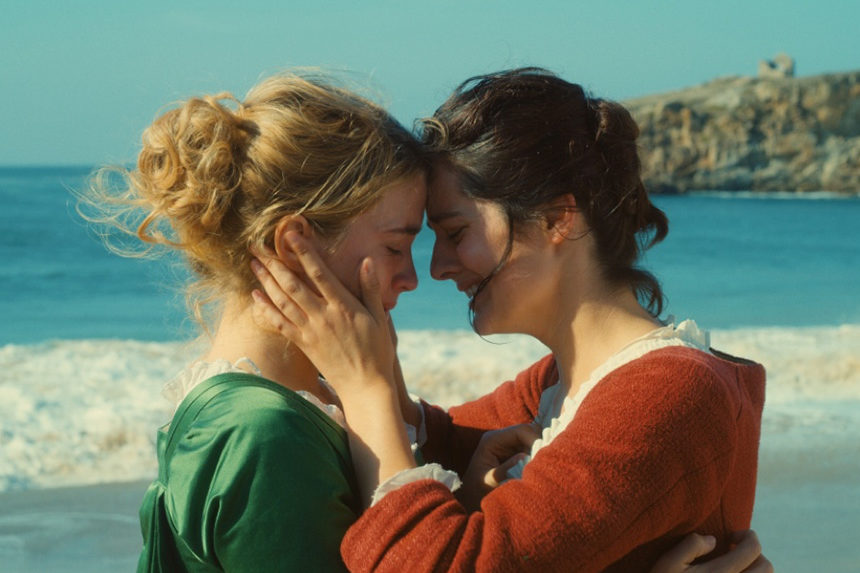Portrait of a Lady on Fire
⭐ ⭐ ⭐ ⭐
Run Time: 2 hours, 2 minutes
Rating: R
Stars: Noémie Merlant, Adèle Haenel
Writer/Director: Céline Sciamma
The great difference between male and female filmmakers may not be in how they look at the world, but in what they choose to look at. In her deliberate, studied, yet viscerally passionate film about two women crushed under the social norms of late 18th century France, writer/director Céline Sciamma frequently has her characters tell each other to “turn around” or “look here.” We’d best heed their advice: There is much to see and appreciate in Portrait of a Lady on Fire.
A brief prologue presents us with a glimpse of the disturbing painting that gives the film its name and introduces us to its creator, a French portrait artist named Marianne (Noémie Merlant, whose dark, piercing eyes seem to burn with an artist’s vision). Then we flash back to its origins, with Marianne bobbing uneasily in a small boat, desperately trying to keep her oil paintings and canvas from tumbling overboard as she is rowed to a remote Atlantic island.
A brief meeting with the lady of the house (Valeria Golino) sets the plot in motion. The woman’s daughter Héloïse (Adèle Haenel, whose sly, knowing look reminds me of Scarlett Johansson) has been promised in marriage to a man in Milan, but first he wants to see a portrait of her. Héloïse, who is being unreasonably difficult about the arrangement, has already chased one painter from the house, so this time Mom has a plan: Marianne will pretend to be a woman hired to take long walks with Héloïse along the island’s towering sea cliffs. That may sound like an odd occupation, but Héloïse’s sister, similarly pledged to the man in Milan, recently took a header off one of those cliffs. Perhaps it was an accident, maybe not. In either case, Marianne’s ostensive job is to keep Héloïse’s feet on solid ground — all the while secretly studying her so she can whip up an oil portrait in her room after hours.
Director Sciamma takes us on lots of those long walks. Even longer are delicately structured scenes of the women gavotting around their growing attraction for each other. Once the mother’s ruse is exposed, and Héloïse finally agrees to serve as a willing model, Sciamma orchestrates extended scenes in the studio, observing the painter’s technique in patience-testing detail.
Portrait of a Lady on Fire is defiantly a women’s film: Aside from those guys rowing Marianne ashore at the start, there’s nary a male to be found in the entire movie. In fact, when a subplot involving a pregnancy arises, one can’t help but wonder, “Well, how did that happen?” Yet, for a man in the audience, there are moments when Sciamma seems to be making the film just for him, pulling back a curtain to reveal the secret female longings and ambitions that for too long were kept in the shadows of this Man’s World.
In an age when ambitious women directors seem determined to prove they can slash through action flicks with the Big Boys, Sciamma goes for something infinitely more ethereal: a soft, feminine passion seldom captured on screen. If some of her choices seem derivative, at least she’s cribbing from the best: Hitchcock’s Rebecca, Jane Campion’s The Piano, Stephen Frears’ Dangerous Liaisons to name a few. All those films bravely lingered on their subjects, and here Sciamma is blessed with two lead actors whose haunted round eyes and exquisitely calibrated performances offer portraits of studied desperation, crushed beneath centuries of societal expectations.
Featured image: Portrait of a Lady on Fire, 4Lilies Films. Photo credit: Neon
Become a Saturday Evening Post member and enjoy unlimited access. Subscribe now



